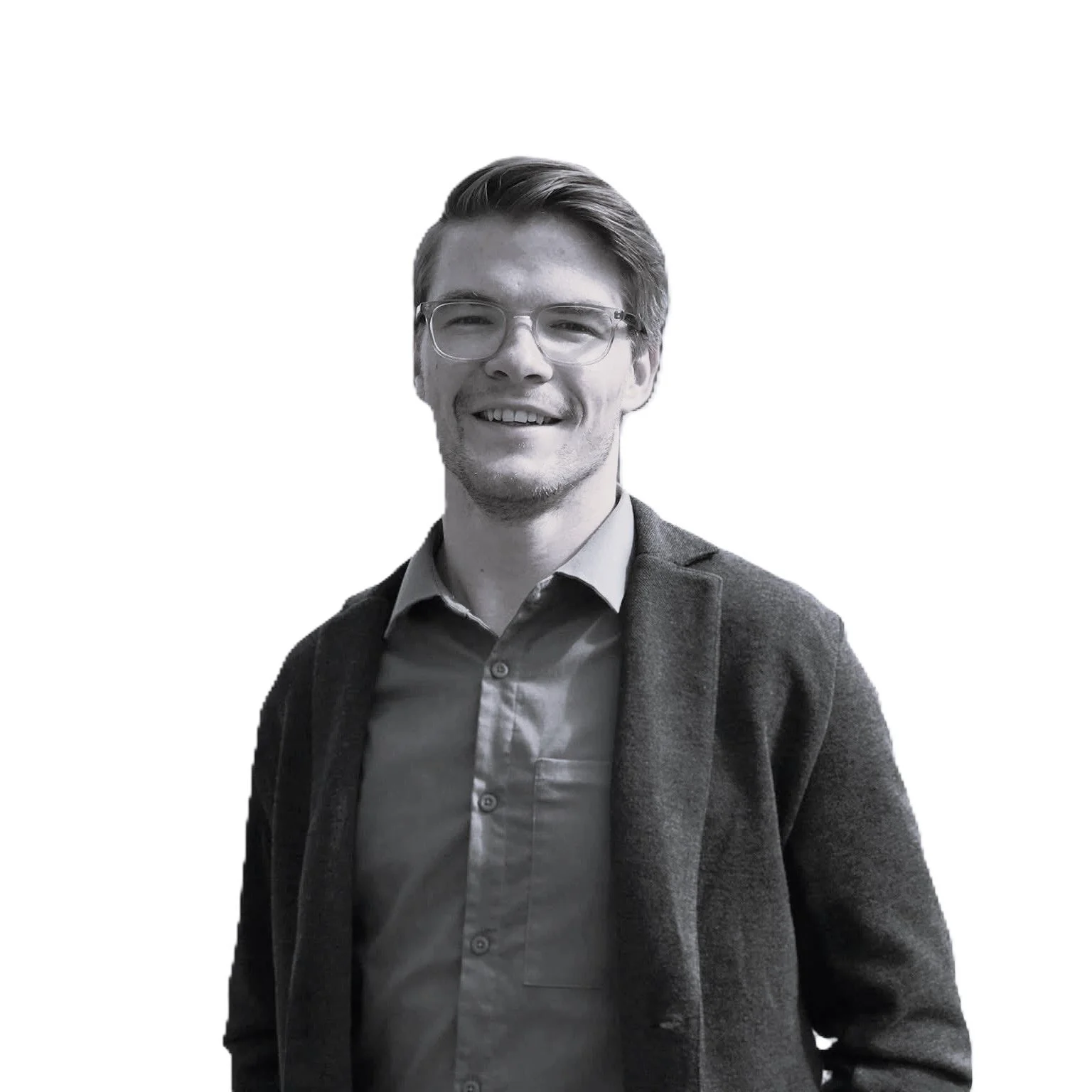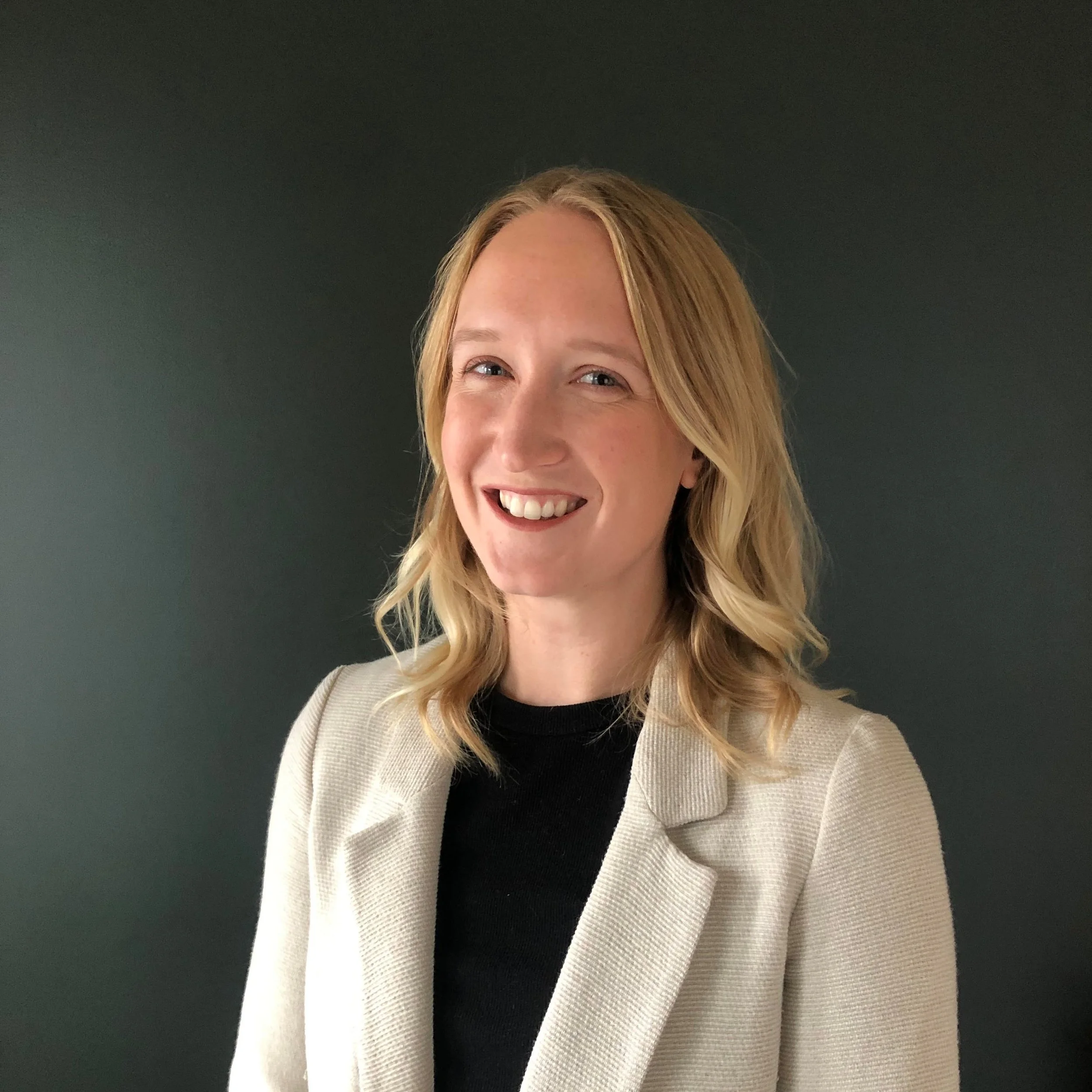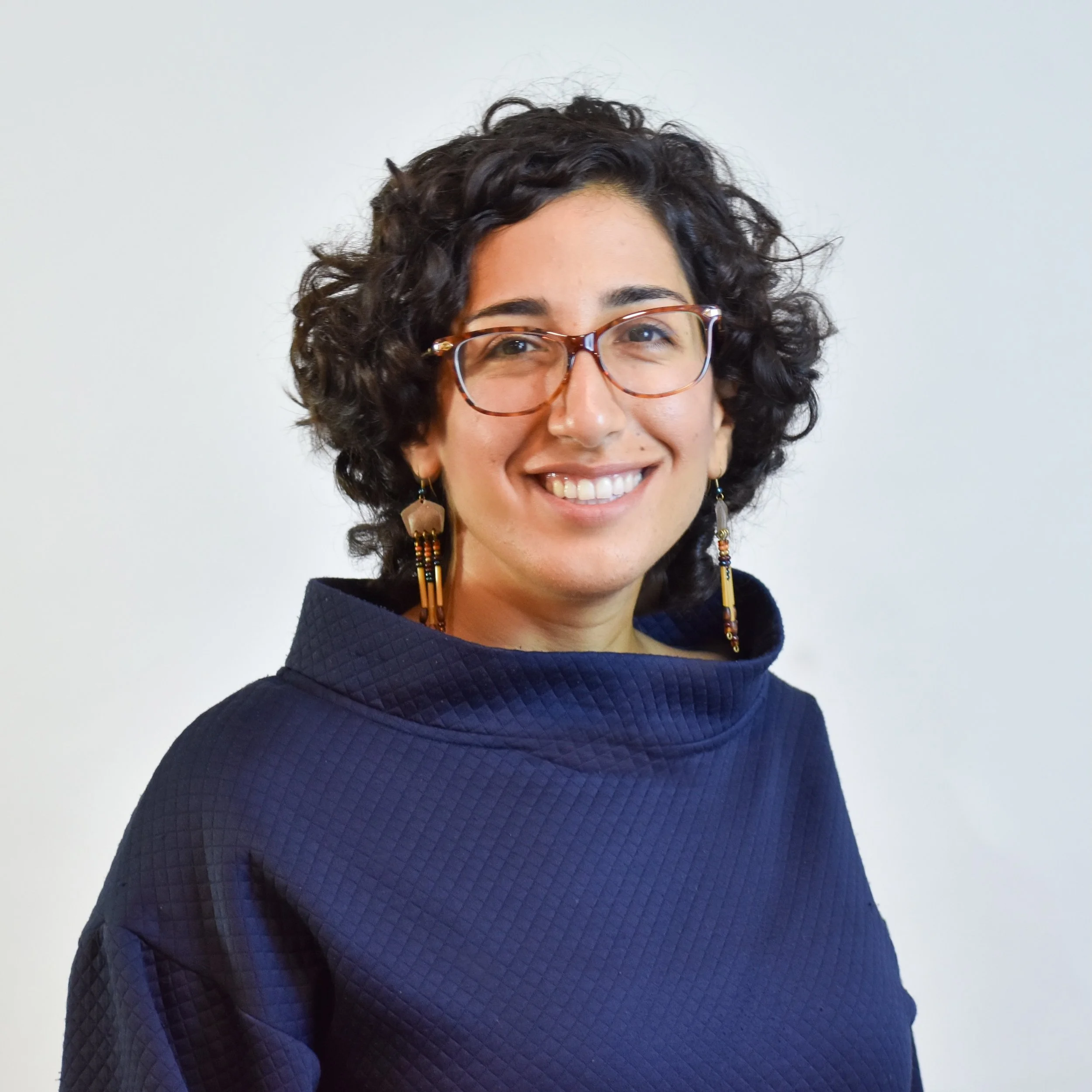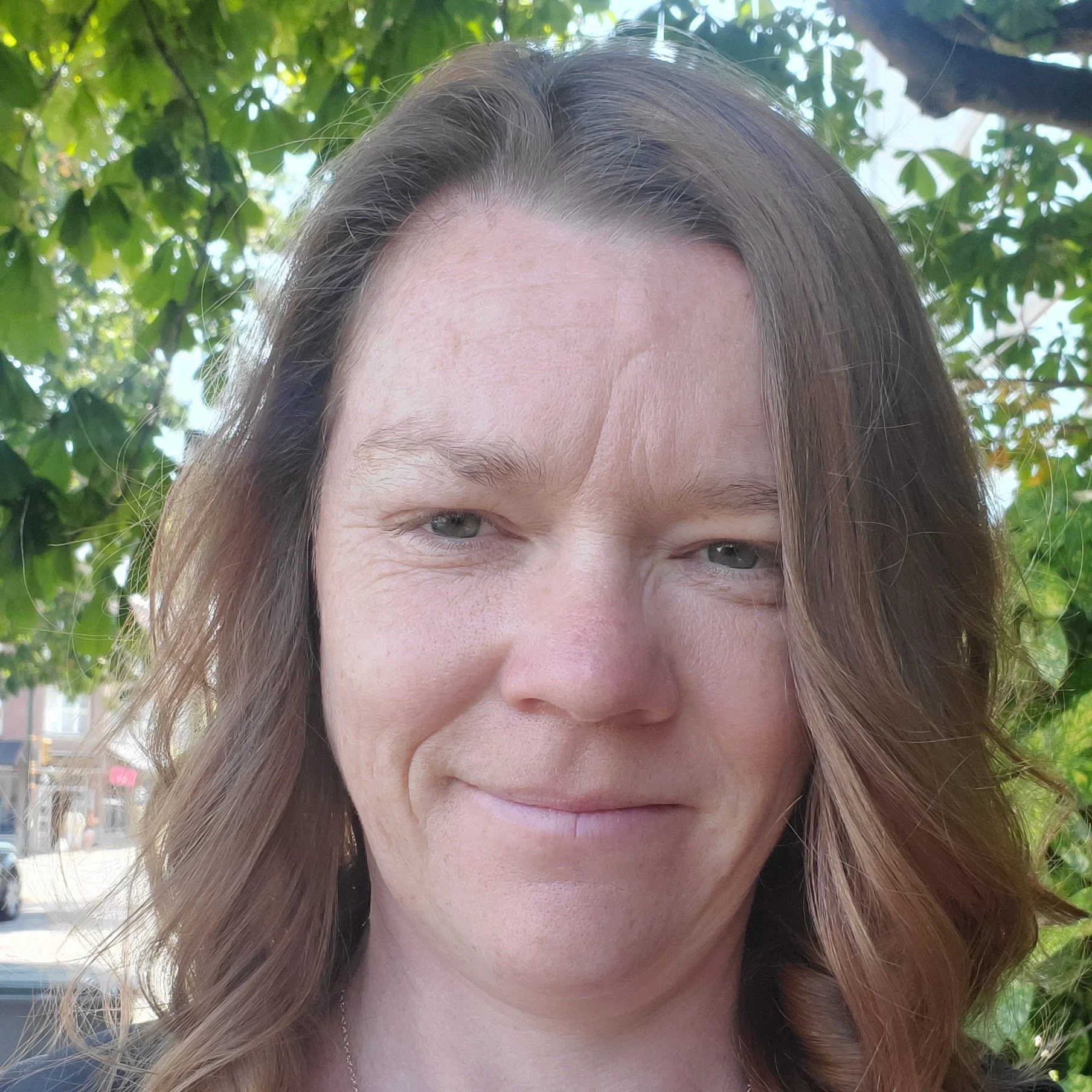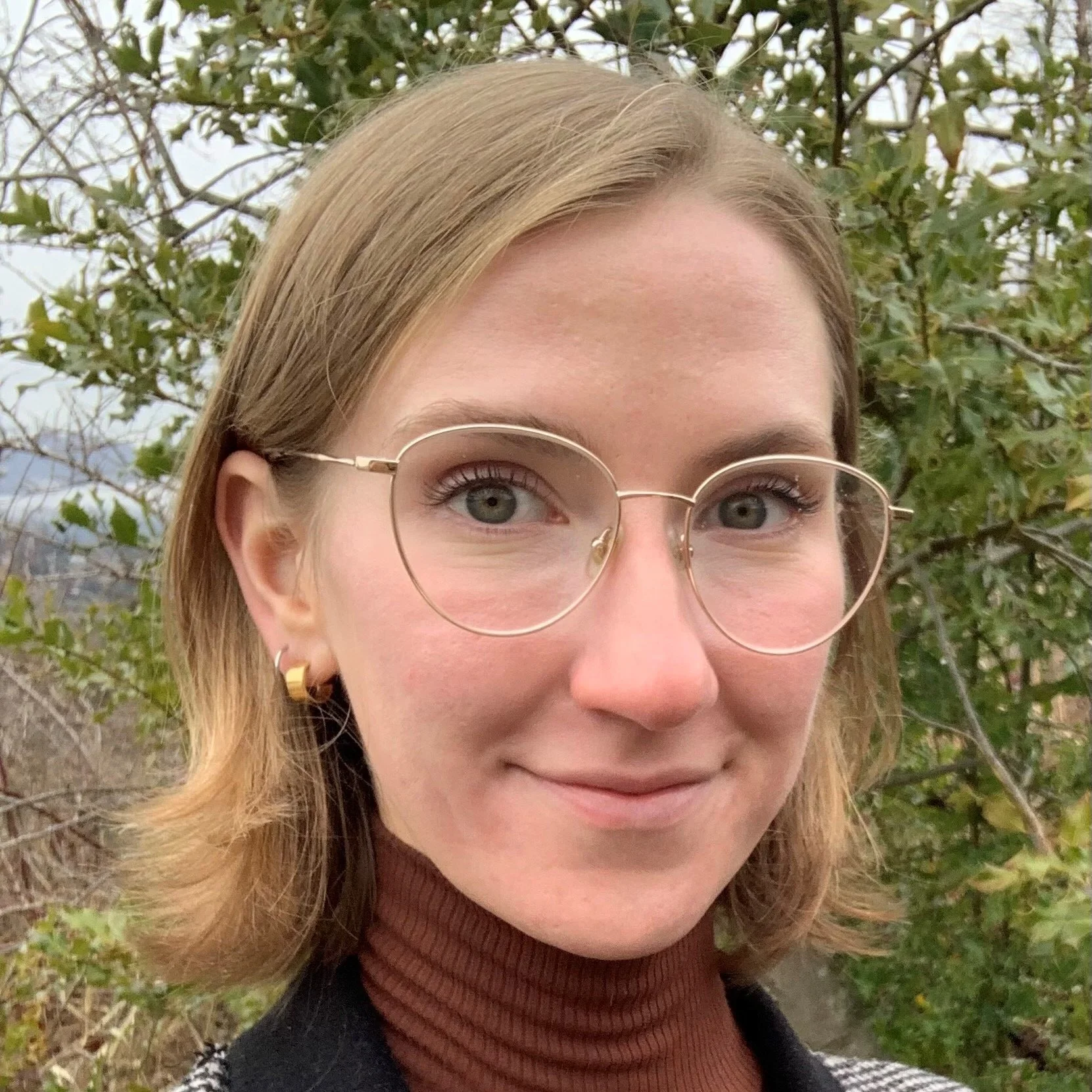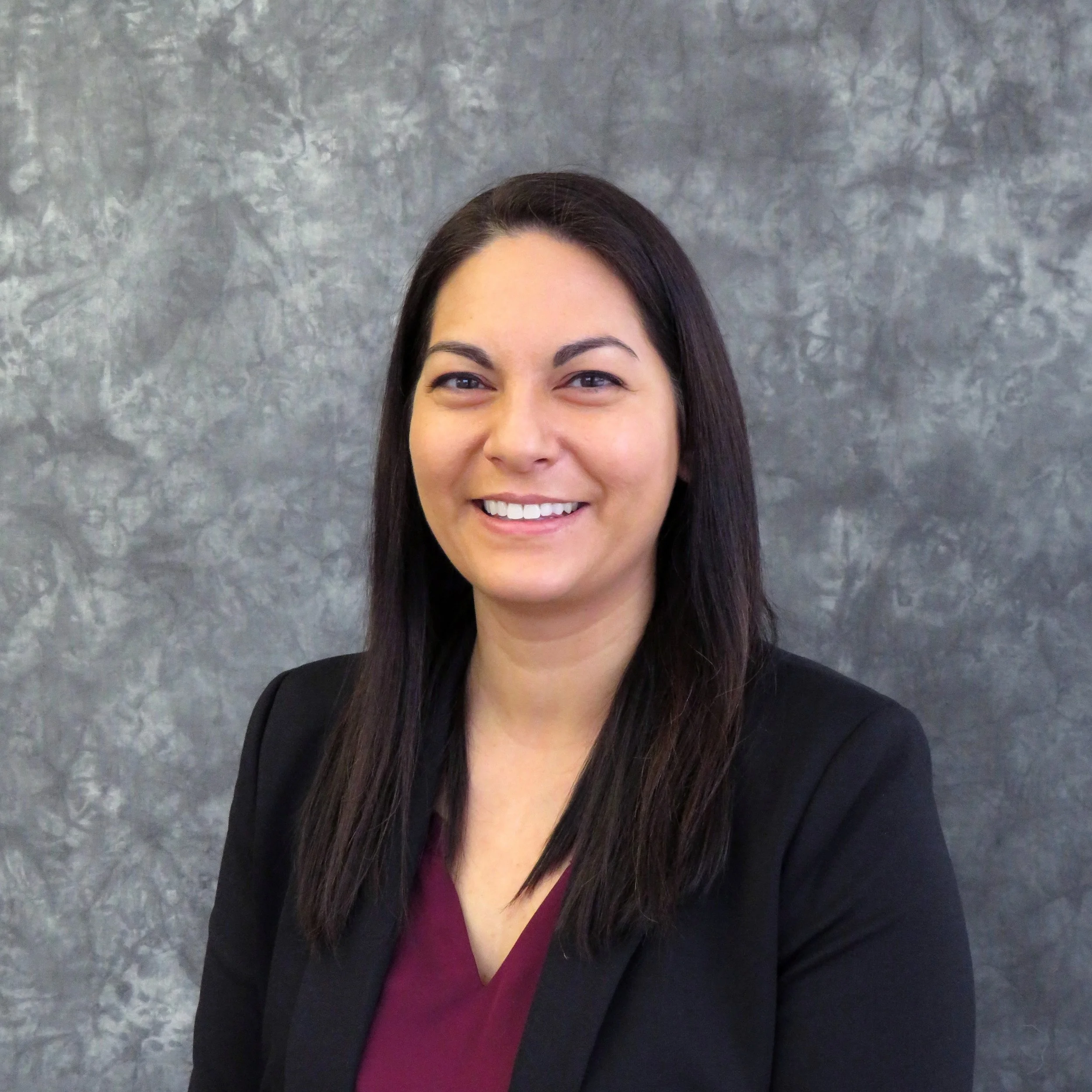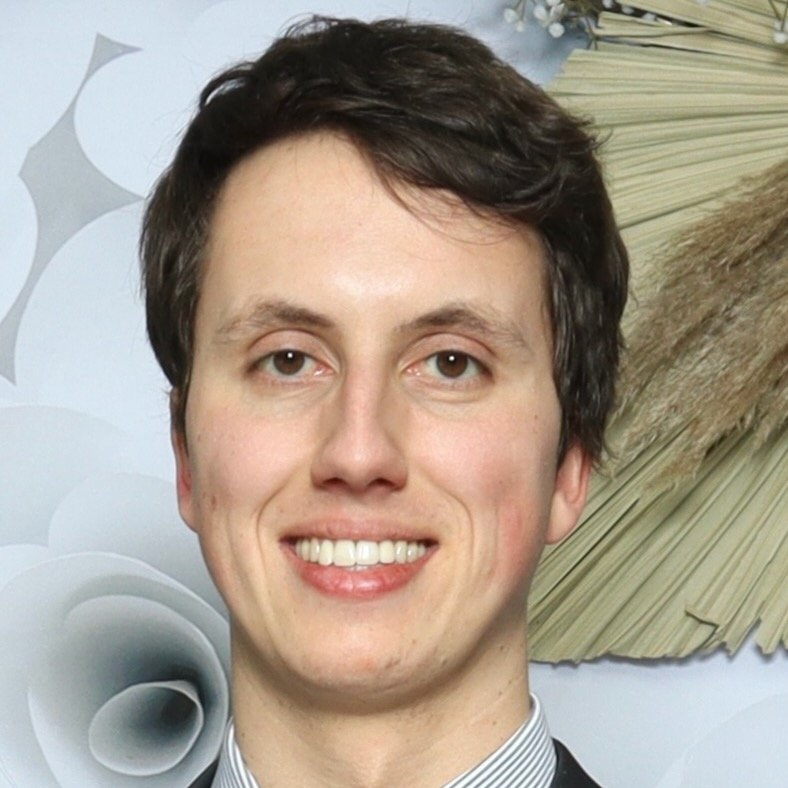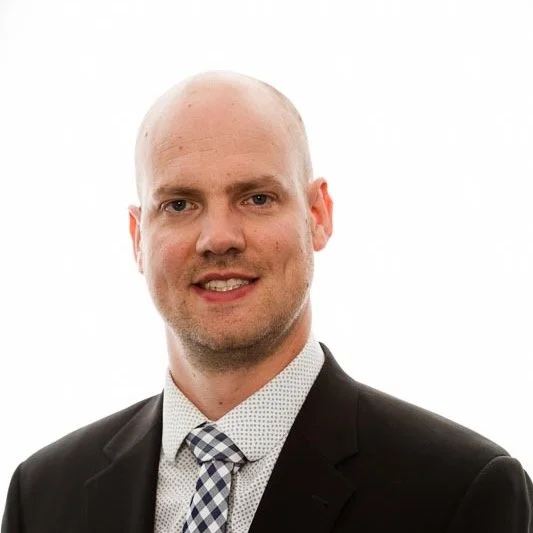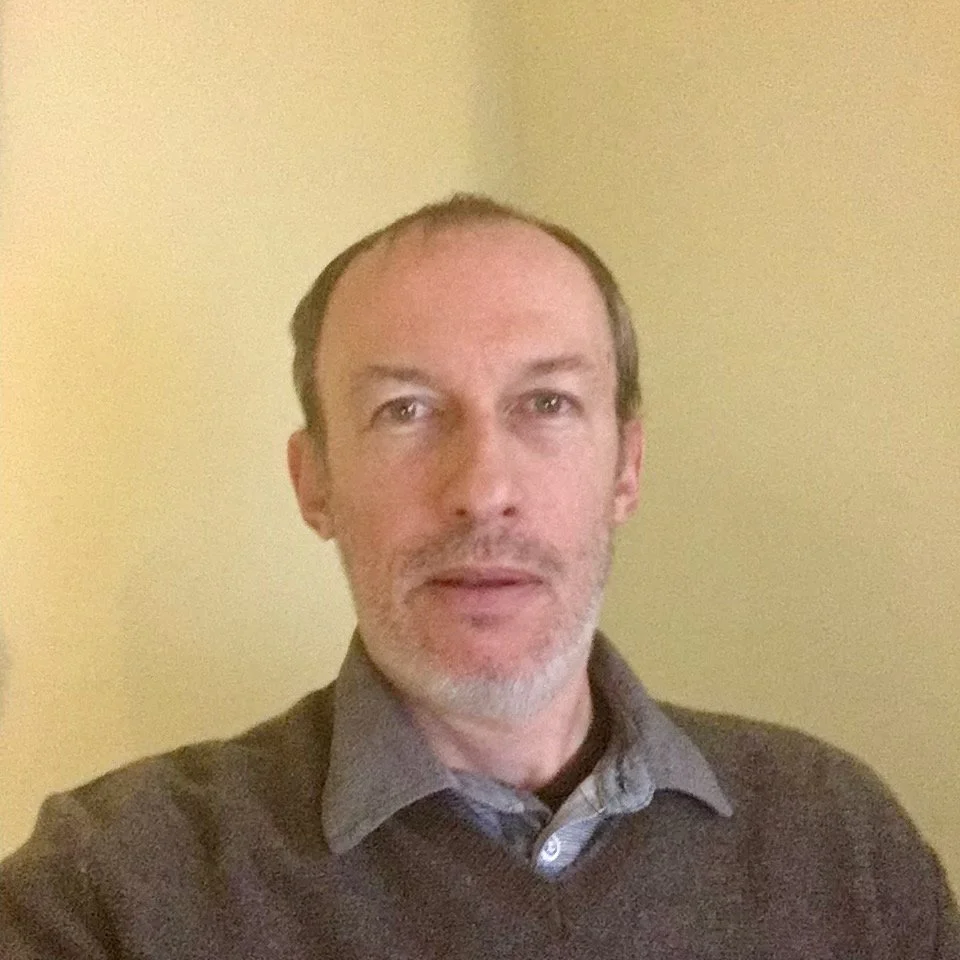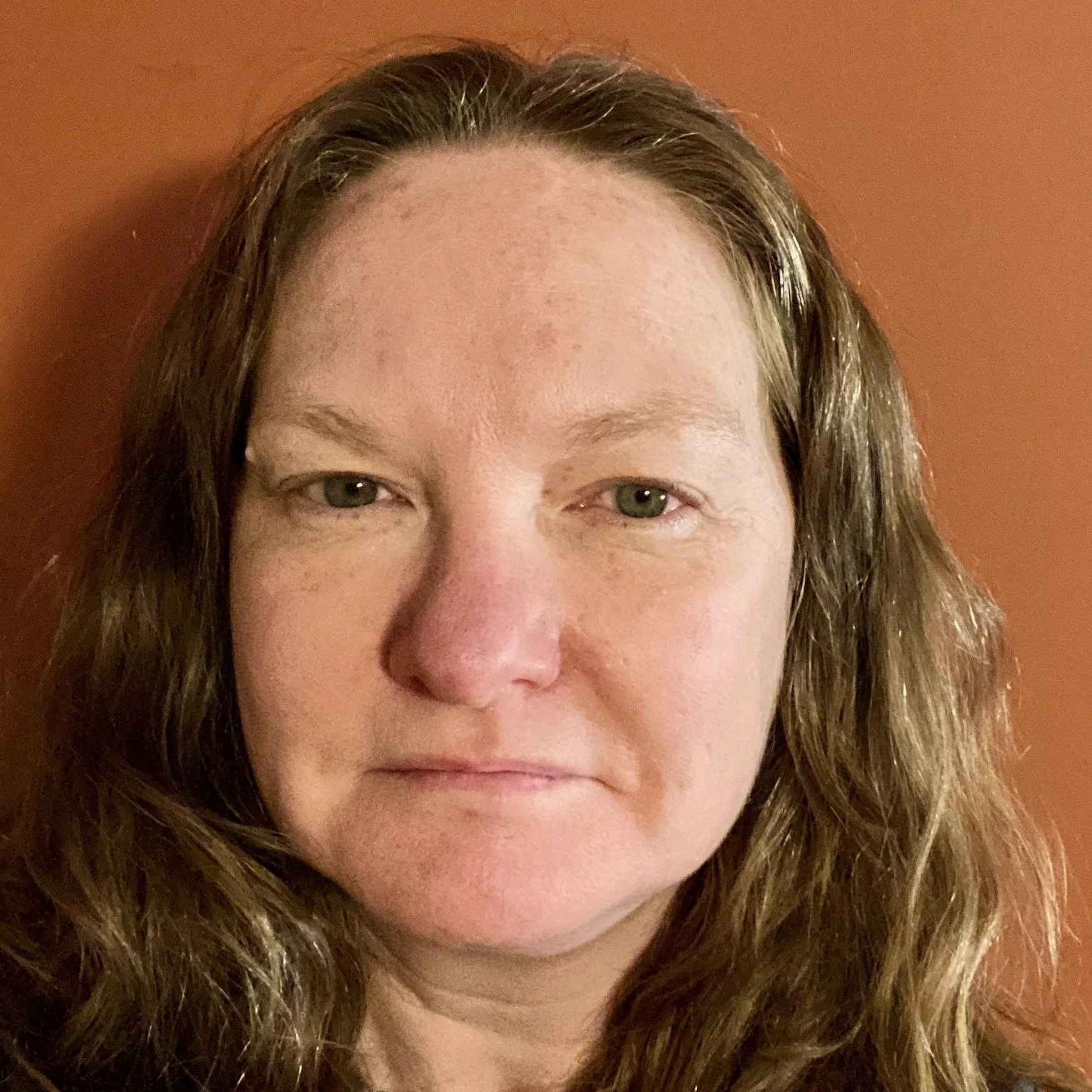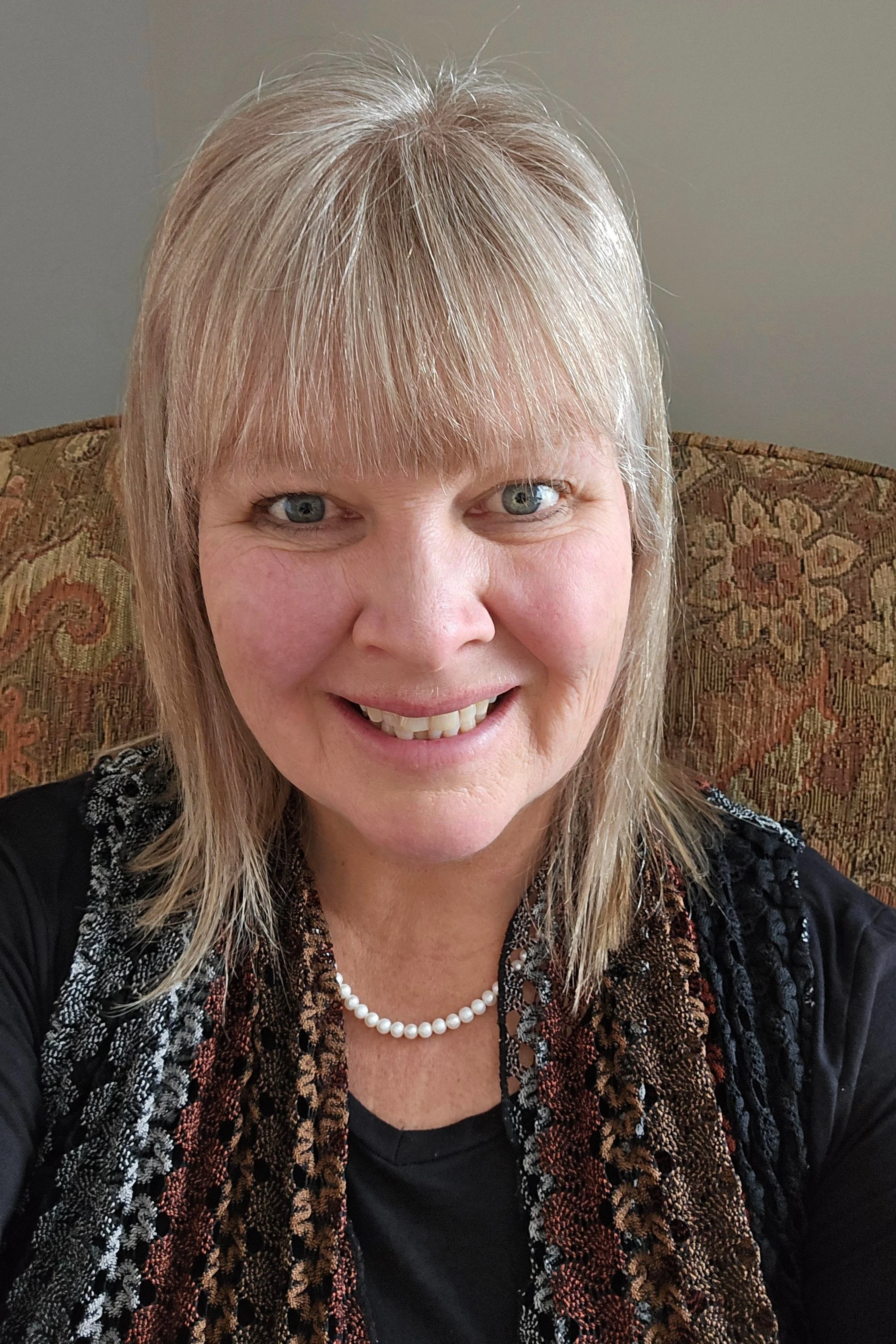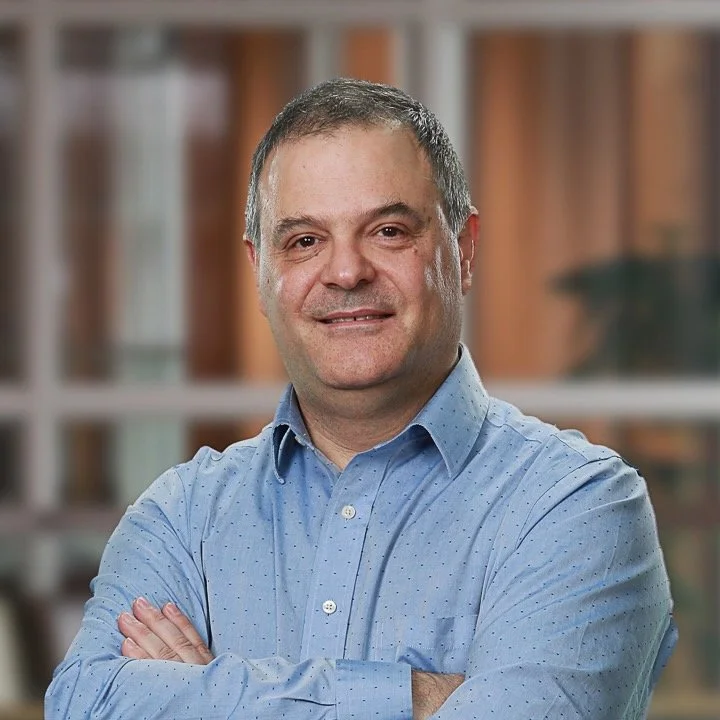Designing for Tomorrow Live
Abstracts and Bios
Edmonton May 7 to 9, 2025
Planning #1
May 8th, 2025 - 8:45 AM to 10:15 AM
From risk to resilience: It all starts with a plan
May 8th - 8:45 AM to 9:10 AM
Planners, engineers, and city builders are all faced with an immediate imperative: how do we consider the impacts of a changing climate in land use planning and development decisions. Across the province, the environmental, social, and economic impacts of climate change are increasingly frequent and more acute, and these trends will continue if no action is taken. Climate resilience cannot be achieved alone and cannot be left to chance. Learn about the critical intersection between climate change and land use planning and development, and the role we can play to ensure our communities take proactive measures to identify and minimize our most significant climate risks tied to growth. Speakers will highlight how the Edmonton Metropolitan Region Board and its 13 diverse member municipalities are working together to advance adaptation action, including the development of a regional climate risk and vulnerability assessment (CRVA). Together, guided by thoughtful preparation and applying a climate change lens, our actions will have the biggest impact in moving from risk to resilience. Climate resilience cannot be achieved alone, now more than ever, municipalities need to work together. It all starts with a plan.
Taylor Varro
Stantec Consulting Ltd.
Taylor is an urban planner bringing experience in project management, long-range planning, policy development, and intermunicipal planning. After over eight years at the Edmonton Metropolitan Region Board (EMRB), Taylor transitioned from the public sector to the private sector as an urban planner at Stantec. He holds a Master of Planning degree from the University of Calgary where he completed a semester abroad at the Royal Melbourne Institute of Technology. Taylor is a systems thinker, who is always looking at the bigger picture and connecting the dots. His portfolio includes a number of projects covering climate resilience, transportation, growth management, agriculture, and digital infrastructure - underscoring the multidisciplinary nature of urban planning.
Seghan MacDonald
City of Edmonton
Seghan MacDonald is a Principal Climate Resilience Planner at the City of Edmonton where she works to integrate climate resilience with planning practice. She holds a Bachelor's degree in Environmental Geology and a Master's degree in Urban and Regional Planning. Seghan’s career has always been centered around the environment and climate and she has endeavored to champion climate action in all of her planning roles. Prior to pursuing planning, she worked on environmental remediation projects across Alberta and the United States. Most recently, Seghan led the development of the Climate Resilience Planning and Development Action Plan, a comprehensive initiative that embeds climate adaptation and mitigation within Edmonton's planning and development continuum.
Evaluating Pathways to Healthy Waters: Modelling Water Quality Outcomes for Decision Making
May 8th - 9:10 AM to 9:35 AM
The City of Vancouver is developing a long-term comprehensive sewage and rainwater management plan to 1) reduce pollution to receiving waters from combined sewer overflows (CSOs) and urban runoff, 2) ensure adequate sewer system capacity in response to growth and climate change, and 3) maintain assets in good condition. The plan, referred to as the Healthy Waters Plan (HWP), will direct billions of dollars of infrastructure investments over the coming decades and will recommend supporting policies and programs. In support of Vancouver’s Healthy Waters Plan, KWL built a scenario testing tool, referred to as the Mass Balance Model (MBM). The MBM is an Excel-based hydrologic, hydraulic, and water quality model of Vancouver’s combined sewer and drainage system. The model uses lot-level GIS inputs (e.g., land use, impervious area, population, lateral separation status) to perform catchment flow and water quality calculations. It runs a one-year continuous simulation at a 30-minute timestep in less than a few minutes. The MBM outputs combined sewer overflows, stormwater discharges, total suspended solids (TSS) loads, and fecal coliform loads at Vancouver’s 30 CSO outfalls and 5 major watersheds. For the Healthy Waters Plan, the model enabled rapid evaluation of water quantity and quality impacts of alternative pathways (each including different combinations of low impact development measures, sewer separation, grey storage and treatment, etc.) to arrive at the Preferred Pathway. In the next phase of the HWP, the MBM will be used to develop an adaptive implementation plan for the Preferred Pathway.
Sara Pour, MASc, P.Eng.
Kerr Wood Leidal
Sara Pour is a professional engineer with over 15 years of experience in municipal engineering specializing in stormwater management. She holds a BASc in civil engineering and a master’s degree in environmental engineering from the University of British Columbia. She has worked both in the public and private sectors. Her experience in the public sector includes four years at the City of Vancouver where she served as a technical specialist for major One Water initiatives including the Rain City Strategy, Vancouver Plan, and the Healthy Waters Plan. As a consulting engineer, she specializes in watershed and infrastructure planning. Rehabilitating urban streams has been her personal and professional passion. She spent graduate school retrofitting Beecher Creek (Burnaby, BC) with LIDs and the following years volunteering with the St George Rainway to daylight a buried creek.
Co-creating the St. George Rainway
May 8th - 9:35 AM to 10:00 AM
St George Rainway is a 4-block green rainwater infrastructure (GRI) project in Vancouver’s Mount Pleasant neighbourhood founded on the idea of a community space that celebrates nature, mobility, community and learning. The project developed from a community vision to daylight a lost creek that once ran through St. George street. A group of community members, professionals, artists and storytellers advocated for the Rainway for more than a decade, hosting design workshops and community engagement events. Their advocacy translated into action, and planning work was started in earnest on the Rainway design in 2020. 4 years later, the Rainway is nearly finished construction, and the principles and vision that founded the project are proliferated throughout the final design. This presentation will tell the story of the St.George Rainway – how community inspired action, how a co-creation engagement process that allowed a maximum amount of road space to be re-allocated for GRI, and how we collaborated across departments to meet the goals of several city-wide strategies, including the Rain City Strategy, Transportation 2040, and the Climate Emergency Plan. We’ll also explore how Ethnobotany principles and community science campaigns influenced the overall landscape design and future programming efforts of the Rainway.
Julie McManus, PMP
City of Vancouver Green Infrastructure Implementation
Julie McManus is a Senior Project Manager on the Green Infrastructure Implementation team at the City of Vancouver. She has over 12 years’ experience in the design, construction and maintenance of GI in both Ontario and BC. She has worked with municipalities, schools, and property owners to create wetlands and rain gardens/bioretention that consider water, ecology, and communities. She also has a passion for education and enjoys creating creative outreach campaign such as community science, life-sized board games, and seeding stewardship and to help communities understand the value of green infrastructure.
Bioretention Research
May 8th, 2025 - 10:45 AM to NOON
Laboratory analysis of stormwater filtration media mass capacity and long-term performance
May 8th - 10:45 AM to 11:10 AM
Stormwater filtration media performance is well studied with regards to solids removal; however, analysis of mass loading capacity, long-term performance, and maintenance is challenging due to the variability and multiple constituents in real stormwater. This research examines the long-term water quality performance and maintenance of two common low impact development filtration practices: high rate biofiltration and conventional biofiltration. Pollutant removal trials were conducted in a laboratory setting per the New Jersey Department of Environmental Protection (NJDEP) filtration protocol in two phases: the first using inorganic sediment per the NJDEP protocol, the second phase with the addition of organic sediment and hydrocarbons. The addition of organics and hydrocarbons is hypothesized to significantly affect maintenance, clog the media more rapidly, and better represent the response of media to real world stormwater. Maintenance triggers were evaluated by measuring excessive head loss, reduction in removal efficiency, and reduction of the treatment flow rate, all of which typically indicate the filter media is clogged. Results suggest stormwater filtration media can clog up to 10x faster with the addition of organic and hydrocarbon constituents to inorganic test sediment. Results also suggest that NJDEP laboratory mass capacity testing is likely not indicative of real-world conditions, and adding organics and hydrocarbons better represents data obtained in field testing. Research gaps will be presented, and suggestions will be made to improve the reliability of laboratory testing. Understanding long-term performance and maintenance demands of stormwater filtration media is critical to meet low impact development goals and protect our water resources.
Joel Garbon
Imbrium Systems
Joel Garbon serves as Senior Regulatory Manager for Imbrium Systems and Rinker Materials. He holds a Bachelor of Science in Applied Science from Miami University, Oxford, Ohio, and has over 40 years of experience as a technical consultant to the chemical, pulp and paper, and stormwater treatment industries. Mr. Garbon has served as Chairman of the Technical Committee of the Stormwater Equipment Manufacturers Association (SWEMA), and is the inventor of multiple well-known stormwater treatment technologies. He is co-author of the award-winning book BREAKTHROUGH POWER: How Quantum-Leap New Energy Inventions Can Transform Our World which chronicles the challenges, opportunities, and progress in the new energy technology field. He also serves as Science and Outreach Advisor for the nonprofit The Center for Unity, providing mentoring and resources to young adults who seek an integrated scientific and spiritual philosophy that makes sense of the complex and chaotic conditions of life on our planet during these challenging times.
Does it age like a fine wine or are we having a mid-life crisis? Evaluating older bioretention system performance and soil evolution
May 8th - 11:10 AM to 11:30 AM
Bioretention is among the most frequently implemented green stormwater infrastructure practices. Beyond basic maintenance checks, however, little monitoring is done, despite functioning to clean stormwater for years. This seminar will focus on a field research study aimed at understanding pollutant accumulation and soil development in older bioretention cells. We visited 29 bioretention facilities in Ohio, Michigan, and Kentucky and sampled soils in the forebay (if present), and near the inlet, middle, and outlet of each bioretention cell. Further, three soil depths (0-2, 4-6, and 14-20 inches) were sampled to understand how pollutants accumulate spatially and with depth, with the ultimate goal of informing maintenance. The outcomes of this study include an understanding of phosphorus, metals, microplastics, PAHs, PCBs, alkylphenols, phthalates, and PFAS accumulation in older bioretention media. Further, we evaluate hydraulic function of the media using quick infiltration tests and relate the hydraulics to soil physical properties, including the development of an organic horizon on top of the filter media. Practical recommendations will be provided from the study including when and where to maintain field-scale bioretention systems.
Ryan Winston, Ph.D., PE
Ohio State University
Ryan Winston is an Associate Professor in the Departments of Food, Agricultural, and Biological Engineering and Civil, Environmental, and Geodetic Engineering at Ohio State University. He is also a Core Faculty of OSU’s Sustainability Institute. Ryan leads the Ohio State University Stormwater Management Program, which provides urban stormwater and stream management research and technical assistance to urban water to federal and state agencies, local governments, and watershed groups. We conduct applied research at the practice, site, and small watershed scales to help understand the cost, benefits and ecosystem services provided by stormwater control measures. Ryan has led more than 100 research projects focused on urban stormwater monitoring and modeling. Ryan has particular interest in applying lessons learned in field-based research projects to inform design of new stormwater controls.
Microplastics in stormwater: Pavements as a pollutant source and the role of bioretention gardens as a removal strategy
May 8th - 11:30 AM to 11:50 AM
Due to the widespread use of plastic in numerous disciplines, microplastics, a suite of environmental contaminants, are found globally in increasingly large quantities. In our recent work at the University of Toronto, we characterized the microplastic concentrations, polymer types, and morphologies released from different pavement types. Though generally lumped together, pavement was found to be a distinct source of microplastics from tire wear. In parallel, we analyzed microplastics present within stormwater at the inlet and outlet of a bioretention cell in Vaughan, ON. Our findings showed that the bioretention cell effectively captured both large (i.e., between 106 µm to 5 mm) and smaller (i.e., between 25 to 106 µm) dimensioned microplastics at rates of 84% and 71%, respectively. This work demonstrates that infiltration-based stormwater solutions are an effective strategy for removing microplastics from stormwater.
Jennifer Drake, Ph.D., P.Eng.
Carleton University
Dr. Jennifer Drake is an Associate Professor in the Department of Civil and Environmental Engineering at Carleton University and Canada Research Chair Tier II of Stormwater and Low Impact Development. Recognized as one of Canada's leading experts in stormwater management, low impact development (LID), and green infrastructure, Dr. Drake's research emphasizes sustainability and interdisciplinary design. Her work spans various stormwater systems, including conventional conveyance, end-of-pipe controls, vegetated infrastructure, and infiltration-based technologies.
Case Studies and Lessons Learned #1
May 8th, 2025 - 1:00 PM to 2:30 PM
Paving the way for LID
May 8th - 1:00 PM to 1:20 PM
The transportation sector is a significant contributor to the creation of impervious surfaces, which increase stormwater runoff and compromise water quality. Implementing Low Impact Development (LID) techniques along transportation networks is an effective way to address these challenges. In retrofit scenarios, innovative and creative solutions are often required to work within area-specific constraints. This presentation will explore two projects that showcase such creativity in managing stormwater with LID. The first case study focuses on constructability issues with soil cells and the use of case bored piping in the Fort Road Active Transportation Project. This includes a discussion of design considerations such as inlet and pipe design, potential construction equipment, utility constraints, and optimizing the LID footprint along a major arterial. The second case study examines the use of LID chicanes in the Garneau and McCauley Neighbourhood Renewal Projects. This will explore how the design evolved from its initial implementation in the Garneau project to the recent McCauley project, the benefit of combining stormwater management with traffic calming features, and the key lessons learned.
Dwayne Andrews, C.E.T.
Al-Terra
Dwayne is a senior design technologist with over 15 years experience. He specializes in urban renewal projects focussed on improving intersection safety, adding active modes infrastructure, place-making and stormwater management, including Low Impact Development (LID) features. To date, Dwayne has designed and implemented more than 20 different LID sites.
During his career, he has seen projects through many lenses: surveyor, inspector, contract preparation and administration, designer, and project manager, on projects ranging from major arterial roads, neighbourhood renewals, streetscapes, active modes, traffic calming and stormwater management. This experience provides him with a broad understanding of what it takes to create a successful project from start to finish.
Curtis Flack, P.Eng.
Al-Terra
Curtis is a complete street engineer working with Al-Terra since 2016, specializing in infrastructure renewal. His work focuses on streetscaping, traffic calming, and active transportation, creating urban spaces that are safe, connected, and livable. Curtis has contributed to major projects like the Boyle Street and Garneau neighbourhood renewals, where he helped integrate multimodal infrastructure that supports active transportation and fosters vibrant streetscapes.
He has experience incorporating Low-Impact Development (LID) into urban environments through Edmonton’s neighbourhood renewal program in partnership with EPCOR. These efforts enhance stormwater management, promote sustainability, and create resilient streets.
Passionate about collaborative design, Curtis enjoys working with landscape architects to transform public spaces into welcoming environments where people live, work, and play. He believes that well-designed infrastructure strengthens communities, improves urban resilience, and enhances overall quality of life.
Marda Loop Permeable Pavement - Implementation and Lessons Learned
May 8th - 1:20 PM to 1:40 PM
The Marda Loop Main Streets project marks the first implementation of permeable pavement within a public road carriageway in Calgary, Alberta. This innovative initiative integrates green infrastructure into a dense urban environment, offering a sustainable solution for stormwater management while enhancing the community’s public spaces. The presentation will delve into the design and installation details of the permeable pavement system, including key considerations for its integration into the urban landscape and Calgary's climate.
It will also highlight the extensive engagement process with interested parties to secure buy-in, as well as operational and maintenance (O&M) strategies for long-term performance. The discussion will cover the pavement’s performance in winter conditions and provide lessons learned throughout the implementation process. Attendees will gain insights into how this project not only meets stormwater management goals but also serves as a model for future green infrastructure initiatives in urban settings.
Leanne Christianson, P.Eng.
City of Calgary
Leanne Christianson is a stormwater engineer and project manager with over 13 years of experience in municipal stormwater management, recently joining The City of Calgary. She specializes in retrofit drainage designs, often using innovative methods to upgrade existing infrastructure and reduce flooding risk.
Her recent work includes serving as the stormwater lead for the Marda Loop Mainstreets project — the first implementation of permeable pavement within a public road carriageway in Calgary. This innovative project aims to integrate green infrastructure into a dense urban environment, balancing stormwater performance with community-focused design.
Inner city flood mitigation: Parkdale dry pond, underground storage, LID, and sewer separation
May 8th - 1:40 PM to 2:00 PM
Stantec provided design services to EPCOR Drainage for the Parkdale Dry Pond & Sewer Separation Project with the ultimate goal of reducing flooding risk in the Parkdale neighborhood. A combination of a dry pond, underground storage, and absorbent landscape (LID) were implemented to temporarily store storm runoff during a variety of storm events. The project was constructed in 2023 & 2024.
Sara Kardash, E.I.T.
Stantec Consulting Ltd.
Sara Kardash is a Water Resources EIT with a B.Sc. Degree in Civil Engineering and an Environmental Specialization. Based in the Stantec Edmonton Water Resources group, Sara currently provides project coordination and design support for projects primarily in Edmonton and St. Albert, and occasionally throughout Alberta and Canada. Sara has supported several stormwater management projects and contributed to LID projects from concept to construction including bioswales, bioretention basins and gardens, permeable pavement, underground storage and soil cells. Outside of LID, Sara contributes to stormwater outfall improvements, dry pond design and construction, and utility coordination – all requiring significant coordination with various disciplines from landscape architects to structural to transportation. In her free time, Sara enjoys getting out to explore Edmonton’s River Valley with her partner and their dog – always keeping a keen eye out for drainage improvement opportunities! Sara also partakes in several fibre-art hobbies – ask to see her multi-media rain garden piece during the conference!
Lessons in design and construction of underground stormwater systems
May 8th, 2025 - 2:00 PM to 2:20 PM
Stantec provided design services to EPCOR Drainage for the Parkdale Dry Pond & Sewer Separation Project with the ultimate goal of reducing flooding risk in the Parkdale neighborhood. A combination of a dry pond, underground storage, and absorbent landscape (LID) were implemented to temporarily store storm runoff during a variety of storm events. The project was constructed in 2023 & 2024.
Ian Thorner
Layfield Group
Bio coming soon…
Asset Management and Operation & Maintenance
May 8th, 2025 - 3:00 PM to 4:30 PM
Construction is done! Now what? - Long-term management of green stormwater infrastructure in Vancouver and Calgary
May 8th - 3:00 PM to 3:20 PM
Green stormwater infrastructure (GSI) encompasses a suite of small, distributed systems that use nature-based solutions to protect, restore and mimic the pre-development water cycle. These hybrid engineered/natural systems capture runoff close to where it lands, providing water quality improvements and recharging groundwater instead of directly discharging to storm sewers and adjacent waterbodies. The City of Vancouver has been building GSI for almost 30 years, and with the adoption of the Rain City Strategy in 2019, implementation has ramped up to over 350 assets, including bioretention, rainwater tree trenches, permeable pavement and infiltration trenches. While the City of Calgary maintains fewer GSI assets, Calgary is aiming to increase the area of greened stormwater practices and use of low impact development in the years to come. With a growing asset inventory, both cities need to also consider how to operate, maintain, and rehabilitate to ensure long-term success. This presentation will provide an overview of Vancouver’s GSI operation, maintenance, and rehabilitation program, highlighting how inspection data collected through condition assessments and “rainspections” is used to prioritize asset maintenance and rehabilitation. We will go into detail on the rehab program, which aims to update older assets to meet current city targets and priorities, supporting the Rain City Strategy, Biodiversity Strategy, and the Climate Adaptation Strategy. Then, we will discuss how the lessons learned from Vancouver’s programs are being adapted into Calgary’s GSI programs.
Sophie Warren, P.Eng.
City of Calgary Storm & Field Operations Support
Sophie Warren is an Operations Engineer with the Storm & Field Operation Support group at the City of Calgary. She has over 7 years’ experience in the design, construction and maintenance of vegetated stormwater management systems in BC and Alberta. In her previous role, Sophie worked as a Green Infrastructure Engineer with the City of Vancouver, where she was responsible for the implementation of distributed Green Infrastructure systems in the public right of way as well as adaptive rehabilitation efforts for the City’s aging Green infrastructure assets. In her current role, she manages the City of Calgary’s Low Impact Development maintenance and renewal programs.
Julie McManus, PMP
City of Vancouver Green Infrastructure Implementation
Julie McManus is a Senior Project Manager on the Green Infrastructure Implementation team at the City of Vancouver. She has over 12 years’ experience in the design, construction and maintenance of GI in both Ontario and BC. She has worked with municipalities, schools, and property owners to create wetlands and rain gardens/bioretention that consider water, ecology, and communities. She also has a passion for education and enjoys creating creative outreach campaign such as community science, life-sized board games, and seeding stewardship and to help communities understand the value of green infrastructure.
Low Impact Development Asset Management showcasing lessons learned from Canadian municipalities
May 8th - 3:20 PM to 3:40 PM
The use of Low Impact Development (LID) is becoming more prevalent as cities seek sustainable strategies to manage stormwater at its source. LIDs provide environmental, economic, and social benefits to urban areas. As we move forward, embracing LIDs will be essential for creating sustainable, resilient, and vibrant cities. This presentation aims to support informed decision-making, with a special focus on the operation and maintenance of LID facilities, monitoring of these facilities, and lessons learned from the construction and performance monitoring of LIDs in practice.
Sarah Andrew, P. Eng. (ON)
GHD
Sarah Andrew is an Associate, Senior Water Resources Engineer, and Project Manager for GHD’s Ontario Integrated Water Management team based out of Waterloo. She has over 17 years of experience in stormwater management related design, including both municipal and industrial green infrastructure, as well as performance monitoring of these features. She has developed and executed numerous surface water monitoring programs, managing both small and complex large-scale field and data monitoring programs using manual and real-time data collection methods. Her experience with performance monitoring and meteorological systems has allowed Sarah to design climate resilient SWM infrastructure using both traditional and green elements.
Facilitated asset management discussion
May 8th, 2025 - 3:40 PM to 4:30 PM
Discussion facilitated by Sarah Andrew.
Sarah Andrew, P. Eng. (ON)
GHD
Sarah Andrew is an Associate, Senior Water Resources Engineer, and Project Manager for GHD’s Ontario Integrated Water Management team based out of Waterloo. She has over 17 years of experience in stormwater management related design, including both municipal and industrial green infrastructure, as well as performance monitoring of these features. She has developed and executed numerous surface water monitoring programs, managing both small and complex large-scale field and data monitoring programs using manual and real-time data collection methods. Her experience with performance monitoring and meteorological systems has allowed Sarah to design climate resilient SWM infrastructure using both traditional and green elements.
Luke Kurach, P.Eng.
EPCOR
Luke Kurach is the Manager of Land Engineering with EPCOR Water Services.
Luke has 23 years of experience, including construction and project management, water and wastewater infrastructure design, and asset management. Luke’s education and training include; B.Sc Civil Engineering, Management Development Certificate for Professional Engineers and Geoscientists, and Certificate in Asset Management (The Institute of Asset Management).
His current role involves leading a team in the development of all stages of design of EPCOR existing and new land assets including but not limited to all types of green infrastructure, small underground storage, dry ponds, outfalls and other natural or man-made assets managing overland runoff.
Sophie Warren, P.Eng.
City of Calgary Storm & Field Operations Support
Sophie Warren is an Operations Engineer with the Storm & Field Operation Support group at the City of Calgary. She has over 7 years’ experience in the design, construction and maintenance of vegetated stormwater management systems in BC and Alberta. In her previous role, Sophie worked as a Green Infrastructure Engineer with the City of Vancouver, where she was responsible for the implementation of distributed Green Infrastructure systems in the public right of way as well as adaptive rehabilitation efforts for the City’s aging Green infrastructure assets. In her current role, she manages the City of Calgary’s Low Impact Development maintenance and renewal programs.
Julie McManus, PMP
City of Vancouver Green Infrastructure Implementation
Julie McManus is a Senior Project Manager on the Green Infrastructure Implementation team at the City of Vancouver. She has over 12 years’ experience in the design, construction and maintenance of GI in both Ontario and BC. She has worked with municipalities, schools, and property owners to create wetlands and rain gardens/bioretention that consider water, ecology, and communities. She also has a passion for education and enjoys creating creative outreach campaign such as community science, life-sized board games, and seeding stewardship and to help communities understand the value of green infrastructure.
Jo Whiteside, P.Eng.
City of Calgary
Jo Whiteside is a civil engineer and joined The City of Calgary in 2023, after more than 16 years as a consulting engineer. She now supports the Stormwater Service Line as part of the Utilities Asset Management Planning group. Jo is passionate about connecting with a wide array of partners, both internally and externally, to help The City to get the best value and performance from its assets efficiently.
Travis Kennedy B.Sc., P.Ag.
City of Edmonton
Travis has worked at the City of Edmonton across the Open Space Operations portfolio for the past 18 years as a labourer, forester, principal of horticulture, district manager and as the General Supervisor of Open Space Operations. He is currently on Secondment to Edmonton Fire Rescue Services where he is focused on Emergency Management, Wildfire Risk and Remotely Piloted Aircraft Systems.
He is a practicing Agrologist in the Province of Alberta and a champion for municipal innovation. Travis works with his teams to constantly challenge the status quo of what is expected from Open Space Operations. Travis and his teams are centered on data driven decision making and ensuring staff in the field have the training, equipment and capacity to do a good job every day.
Planning #2
May 9th, 2025 - 8:45 AM to 10:15 AM
Retrofitting LID in urban contexts: A retrospective on LID implemented in the City of Edmonton through its Neighbourhoood Renewal Program
May 9th - 8:45 AM to 9:05 AM
Since 2020, EPCOR and the City of Edmonton have partnered to coordinate the delivery of low impact development facilities through the City’s Neighbourhood Renewal Program. The program rehabilitates infrastructure in the road right-of-way at the neighbourhood scale, and enables large scale analysis and planning to occur for a few years prior to contract documents and implementation. Speakers Shanna McKinnon and Jason Pfeifer collectively share their experience working on the analysis, design, and implementation of LID in 8 neighborhoods, including Strathcona, Garneau, Pleasantview, Boyle Street, McCauley, Wîhkwêntôwin (formerly Oliver), Ottewell, and Meyokumin. The talk will explore the process of planning and design from the initial stages of identifying potential LID sites and opportunities, assessing their feasibility through an evaluation process, making revisions during construction documents, testing and oversight during construction, and evaluating health and effectiveness in post-occupancy. LID delivered through the Neighbourhood Renewal program has represented a collaborative and iterative process between EPCOR, City, and private consultants. Over this period, a number of new approaches have been piloted and explored. Through the talk Jason and Shanna will share successes, lessons learned, regulatory pitfalls, best practises, and broadly share a portfolio of LID work covering a large geographic area.
Jason Pfeifer, AALA
Pfeifer Design Associates Inc.
Jason is an Urban Designer and Landscape Architect with over 15 years of demonstrated experience in both the public and private sectors. He brings interdisciplinary expertise spanning landscape architecture, urban design, planning, and architecture, contributing to the successful delivery of diverse built environment projects across multiple scales. His work emphasizes the transformation of public spaces and the urban public realm, fostering vibrant, inclusive, and well-integrated outcomes.
In 2024, Jason incorporated PD+A Studio, an independent consulting practice. For seven years prior, he worked with Al-Terra Landscape Architecture, where he led urban design and landscape architecture scopes for retrofit urban renewal projects in the Strathcona, Garneau, Pleasantview, Boyle Street, McCauley, and Wihkwentowin neighbourhoods - guiding projects from strategy and planning through design and implementation. These initiatives were delivered under the City of Edmonton's Neighbourhood Renewal program through Building Great Neighbourhoods. In 2020, EPCOR partnered with the City to deliver its Low Impact Development program through this framework.
Jason thrives on interdisciplinary collaboration, leveraging his skills to achieve coordinated and innovative project solutions. His career is further enriched by 10 years of prior experience in media, visual communication, and web technology—sharpening his expertise in stakeholder communication and engagement strategies, which are critical tools for shaping both built and natural environments.
Shanna McKinnon, AALA, CSLA
Public City Architecture Inc.
Shanna is a landscape architect specializing in urban design, with 19 years of experience delivering impactful public realm projects across a range of scales and complexities. Her work spans streetscapes, active transportation corridors, open spaces, and low impact development (LID) infrastructure, all grounded in a people-first approach to city building. Shanna brings extensive experience collaborating with both municipal clients and private developers to integrate new developments with existing infrastructure, revitalize underutilized spaces, and create inclusive environments that invite people to stay, explore, and connect.
She works seamlessly within interdisciplinary teams, coordinating across sectors to ensure cohesive, context-sensitive outcomes that elevate the urban experience. Her approach emphasizes thoughtful integration of natural systems, social needs, and technical requirements to shape resilient and engaging public spaces. With a deep understanding of both the challenges and opportunities present in urban environments, Shanna is committed to creating places that are functional, beautiful, and built for longevity.
Brownfield to Headwaters: District Stormwater Planning and Implementation for the Highland Bridge Development
May 9th - 9:05 AM to 9:25 AM
Redevelopment on Ford's former Twin Cities Assembly Plant in St. Paul has begun on 122 acres of land situated along the Mississippi River. For more than 15 years, the City’s vision for the site has been that it will be a livable, sustainable mixed-use neighborhood that looks to the future with clean technologies and high-quality design for energy, buildings and infrastructure. Capitol Region Watershed District and the City of Saint Paul, with Barr Engineering’s assistance, developed a stormwater management vision for the Ford Site that is the backbone of the development.
A comparative analysis was completed to compare redevelopment public realm and stormwater management alternatives. A centralized stormwater management approach was compared to a baseline parcel-by-parcel approach. Innovative approaches/tools for comparing feasibility costs, benefits, impacts and sustainability profiles for the different options provided valuable insights about the community value that redevelopment alternatives might generate. A key component of the proposed analysis was monetization of ALL the costs and benefits of each scenario, which demonstrated that a centralized stormwater management approach resulted in 2.5 times the benefits for approximately the same cost. The benefits of layered or stacked function of public space allowed for wide-ranging support of the centralized stormwater approach. This was especially important with high land value and redevelopment cost at brownfield site in St. Paul. The analysis provided the technical support to establish the City’s new Green Infrastructure Overlay District and the financing mechanisms to construct, operate and maintain the stormwater system.
Construction of the $13M stormwater infrastructure began in 2020 and was complete in 2022. The constructed BMPs include five large biofiltration basins that use iron-enhanced sand filters to remove dissolved phosphorus, five underground storage and filtration systems that target nutrient loading, two large rate-control ponds, and a re-imagined Hidden Falls Creek. The project reduces total suspended solids by 94%, total phosphorus by 75%, and peak discharges to the downstream waterfall and stream channel by 98% in the 2-year event. The project also includes approximately ½ mile of pedestrian connections that provide access through the site and to the Mississippi River.
This talk will provide an overview of the design, construction process including an innovative approach to construction stormwater bypassing, as well as lessons learned from phasing and operations and maintenance of a stormwater system that had to be completed before any development was constructed. The talk will also highlight how Ryan Companies, the City, and CRWD approached and incorporated public art throughout the site to celebrate the site’s history and connection to water.
Tom MacDonald, P.Eng.
Barr
Tom has over three decades of experience with a broad range of hydrology- and hydraulics-related projects for watershed districts, municipalities, local and state governments, and industrial clients. His work focuses on river hydraulics, flood control and floodplain management, dam modification/removal, fish passage, sediment transport, and environmental permitting. Tom has completed feasibility studies, preliminary and final designs, and permitting for a variety of river projects in North America. He has served as Barr’s project principal for the Alberta EPA Kinuso and Lacombe flood studies as well as the Nose Creek Watershed Model project for the Nose Creek Watershed Partnership in Calgary.
Cultivating community resilience and adaptation through flood risk assessments
May 9th - 9:25 AM to 9:45 AM
As more and more communities experience flooding as a result of record-breaking rainfall events, local decision-makers are increasingly concerned with questions related to preparedness, resilience, infrastructure, and resource management. Local decision-makers are asking, What areas are most vulnerable to flooding from extreme precipitation? Which populations or neighborhoods are most at risk? What is needed to address aging infrastructure, such as roads, bridges, stormwater systems, and dams? Local decision-makers are asking these types of questions in order to develop proactive strategies that address immediate risks and build long-term resilience against the growing impacts of climate change. In this presentation we will demonstrate how flood risk assessments for the City of Rochester, Minnesota and the Comfort Lake-Forest Lake Watershed District informed stormwater management solutions that addressed infrastructural, social and environmental needs. Both assessments included an evaluation of drainage system performance under existing and projected rainfall conditions while characterizing exacerbated risk to socially vulnerable populations. For those portions of the system that appear to be capacity limited, the city evaluated the impacts of these deficiencies on its susceptibility to inundation and flood damage. The consequences of these deficiencies were further evaluated by developing risk profiles for infrastructural, societal, and environmental factors, which were used to prioritize what and where drainage system improvements are most needed to increase climate adaptation and resilience equitably across the city and the watershed district’s priority areas.
Bill Yu, MSc, E.I.T.
EOR
Bill focuses on low impact development (LID) hydrologic and water quality modeling and simulation, and LID layout planning.
Over the past 4 years, he has built strong GIS, modeling, data framework scripting, and stormwater management design skills through projects involving flood risk analysis, LID-BMPs’ design, and developing H&H models and GIS-based tools. His experience also includes climate resilience planning and asset management, where he has contributed to projects assessing infrastructure vulnerabilities, prioritizing adaptive strategies, and integrating sustainable design approaches to enhance long-term system reliability and performance.
LID: Surface-subsurface interactions/ Geotechnical
May 9th, 2025 - 10:30 AM to NOON
Advantages of integrated surface water/groundwater modelling for LID
May 9th - 10:30 AM to 10:55 AM
Planners, engineers, and scientists are faced with the challenge of developing stormwater management approaches for urbanizing lands that maintain pre-development runoff, recharge, and baseflows. Water managers are expected to decrease downstream flood risk and maintain or enhance ecosystem function, while trying to achieve ever increasing population density targets. Surface water modelling has traditionally been used to develop source control and end-of-pipe stormwater management plans, but these strategies overlook important processes and can result in mounding of groundwater, reduction in groundwater discharge, and adverse modifications of wetland hydroperiods. For over 14 years, Matrix Solutions has successfully used integrated surface water/groundwater modelling to support the planning and evaluation of Low Impact Development (LID) from watershed scale to detailed design. These integrated models represent important features, processes, and dynamics, and provide additional confidence in the pre- and post-development function of surface and groundwater systems. In this presentation, case studies will illustrate how integrated modelling can be used throughout the planning process to support different levels of design − from high-level capture estimates to feature-based water balance evaluation to detailed LID infiltration feature analysis. Process-based modelling provides additional confidence, enabling planners and engineers to evaluate development-specific approaches using a combination of source and end-of-pipe controls to optimize urban design, while demonstrating to regulators that local and watershed objectives are met and ecosystem function are maintained.
Chris Gabriel, M.Sc., Dipl. Ing.
Montrose Environmental Solutions Canada Inc.
Chris is a Senior Environmental Consultant with over 20 years of experience in the development and application of hydraulic, hydrological, ecological, groundwater, and integrated groundwater/surface water models. For the last 12 years, Chris’ work has been focusing on the application of integrated groundwater/surface water models for land development and wetland conservation studies. Projects he has recently worked on include feature-based water balances; model-based wetland analysis and impact assessment; Low Impact Development (LID) evaluations; groundwater daylighting in alpine alluvial fans; irrigation studies; contaminant transport and risk assessment; pipeline risk assessment and emergency spill response.
Rain gardens in action: Investigating the water budget and subsurface flow dynamics of two rain gardens in Calgary
May 9th - 10:55 AM to 11:20 AM
Rain gardens are a form of Low Impact Development (LID) practice that are increasingly being utilized to mitigate the adverse effects that urbanization has on local water systems. However, there is a need to better understand rain garden performance, including the overall water budget and potential impacts that infiltrated water from these features may have on nearby buildings and subsurface infrastructure. Detailed hydrologic monitoring was conducted at two community rain gardens in Calgary, Alberta that had been constructed and outfitted with hydrologic monitoring equipment to achieve these goals. Water budgets at each site were created at event and seasonal time scales for the growing seasons of 2023 and 2024. The water budgets indicated that seepage beneath the growing media into the native soil was an important component of water movement and storage and should be factored into rain garden design. Tensiometers within and outside each rain garden provided evidence of the extent of lateral flow at relatively shallow depths (1-1.5m). Groundwater wells at one site also offered insight into the groundwater recharge benefits of rain gardens, as well as the deeper lateral flows and groundwater mounding around and beneath the garden. Results from this study will be integrated into numerical models that can simulate the impacts of rain gardens under varying geologic and climate conditions, as well as provide greater confidence in the design and installation of rain gardens and other infiltration-based LID practices in urban settings.
Daniel Ilg, B.Sc.
University of Calgary
Daniel completed a BSc in Geology at the University of Calgary in 2022 and is currently pursuing an MSc in Hydrogeology with Dr. Edwin Cey. Daniel’s research focuses on urban groundwater, particularly the role of rain gardens as stormwater management tools. His work aims to better understand how two rain gardens in the Calgary area store and remove stormwater, as well as how water enters and moves through the ground around the garden. He enjoys spending time at his research sites—whether it's collecting data, running experiments, or engaging with community members who are interested in learning about Low Impact Developments.
Developing geotechnical recommendations for LID installations within the City of Edmonton
May 9th - 11:20 AM to 11:45 AM
On behalf of EPCOR, WSP Canada Inc. has prepared the report "Low Impact Development – Hydrological and Geotechnical Considerations," to provide updated guidance on geotechnical and hydrogeological considerations essential for Low Impact Development (LID) designs in Edmonton. The report addresses a request for a review of hydro-geotechnical risks resulting from LID installations in Edmonton’s clay based soils. The key tool for infrastructure protection is specified minimum setbacks are recommended for different LID features to protect municipal infrastructure. Where setbacks are not feasible, additional engineering controls, such as waterproofing materials or impermeable geomembranes, are suggested to prevent lateral flow and protect adjacent structures. Supported by a SEEP/W groundwater model, WSP sought to provide supported direction for EPCOR in the implementation of LID projects. The project also included considerable debate around the requirement and extent of assessments required to understand groundwater conditions and soil characteristics before selecting and implementing LID features. Our presentation discusses this debate and provides the authors perspective.
Josh Maxwell, M.Sc., P.Eng., PMP
WSP Canada Inc.
Josh Maxwell leads WSP’s Water Resources practice in Western Canada within the Land Development and Municipal Markets. He specializes in infrastructure planning and design, with a special interest in sustainable stormwater management. He is actively engaged with private and public clients as an engineering consultant, practicing land development and municipal engineering across Western Canada. With 17 years of experience, he is an enthusiastic and outgoing presenter of technical information to private entities, public groups, commissions, councils, and regulatory bodies. Managing competing standards and guidelines, such as those that existing between roadway design standards and stormwater management is an area of interest for Josh. Recently, he has been leading a multidisciplinary project on behalf of EPCOR to develop generalized geotechnical recommendations for LID installations.
David Parsons, M.Sc., P.Geol.
WSP Canada Inc.
David Parsons has been a hydrogeologist at WSP and predecessor companies in Calgary for over 20 years. His work has focussed mainly on groundwater supply evaluation and groundwater seepage assessment and management. Over his career he has worked across disciplines on a variety of environmental, geotechnical, and water resource infrastructure projects for residential, agricultural, municipal, and industrial clients. Recently, David has been engaged with EPCOR in the evaluation of groundwater related impacts from LID installations.
Case Studies and Lessons Learned #2
May 9th, 2025 - 1:00 PM to 2:20 PM
Evolution of stormwater design criteria and hydrologic modelling in the Bow Valley
May 9th - 1:00 PM to 1:20 PM
A key objective of urban stormwater management is the development of a system which mimics the natural hydrology of the undeveloped watershed. To meet this objective, development of site-specific stormwater management design criteria is required. The appropriate selection of site-specific design criteria typically falls onto the designer. It is their responsibility to do their due diligence in identifying design criteria that achieves a “happy medium” between various design criteria sources, background information, field reviews and works completed by others. A proposed development in the Three Sisters Mountain Village (TSMV), located in the Town of Canmore, initiated the upgrade of an existing intersection to a roundabout. The proposed roundabout was located downstream of steep mountainous catchments with several developments and stormwater ponds, and just upstream of Highway 1 and the Bow River. Stormwater management criteria and standards had changed over the three decades of development in the TSMV which took the form of various Master Drainage Plans, Area Structure Plans, SWM Plans, and SWM Design Guidelines. The development of the SWM plan required parsing through nearly two dozen background documents completed over the past 30 years which contained evolving stormwater management design criteria and hydrologic modelling methodology. A site specific SWM plan was developed for the proposed roundabout to achieve stormwater rate control, quality control, and conveyance through storm sewers, ditches, and culverts. Project specific hydrologic modelling methodology was developed to validate the hydrologic model parameters and results with previous works completed by others in the area.
Carter Stelter, P.Eng.
McElhanney Ltd
Carter Stelter has five years of water resources engineering experience in the municipal and transportation sectors. He has completed various projects related to stormwater, water distribution, and sanitary systems, as well hydrotechnical engineering. Carter has worked on public and privately funded projects in British Columbia and Alberta, including municipal utility, transportation drainage, hydrotechnical engineering, and land development. His work experience includes planning, analysis, and design from conceptual to construction phases. Carter also has experience with erosion and sediment control.
Hanson Ranch constructed wetland rehabilitation
May 9th - 1:20 PM to 1:45 PM
Built in the late 1990s, the Hanson Ranch Wetland is one of the City of Calgary’s earliest Constructed Wetland type of storm ponds. It incorporated some interesting features including two meander bends of West Nose Creek within the footprint of the stormwater facility. The facility deteriorated through wind and wave erosion as well as sediment movement and settling within the pond and West Nose Creek that resulted in it not functioning as intended. The storm pond cannot be operated as originally envisioned and as a result it is not compliant with environmental regulations. In consultation with interest holders, The City is redesigning the facility to fulfill its main function of temporarily storing stormwater runoff and releasing it more slowly to the creek so that it can meet regulatory requirements. The interdisciplinary team collaborated to improve the function to address operation and maintenance issues, while including water quality enhancements and improvements to wildlife habitat and biodiversity. The presentation will provide a detailed examination of the issues, share lessons learned, and the current proposed design and preparations for construction.
Chad Nixon, P.Eng.
City of Calgary
Chad is a civil engineer with 20 years of experience working on water projects within Alberta and beyond. As a consultant for 15 years he developed a broad range of experience working on challenging multi-disciplinary projects from concept to detailed design and construction. Projects have included stormwater; slope stabilization; river engineering including; flood mapping, flood protection, erosion protection using bioengineering; Dam rehabilitation; and more. Since joining the City of Calgary in 2021 he’s been privileged to work with a talented and dedicated teams on several stormwater-related projects including the Hanson Ranch Wetland Redesign project that he will be discussing today.
In his spare time he enjoys getting outside for activities with his partner and dog in the City and beyond. He takes inspiration from his observations while gardening, hiking/walking, skiing, or other mini-adventures with his family, nieces, and nephews.
Kim MacKenzie, P.Biol.
KCB
Kim MacKenzie, P.Biol. is a graduate of the environmental biology program at the University of Alberta and has been an environmental consultant for over 20 years. She works as a vegetation ecologist and authenticating wetland professional who enjoys building relationships with team members and stakeholders to implement ecologically sound projects for municipal, energy, mining, and government clients. In her free time, Kim volunteers with provincial nature clubs to help to protect our natural resources and educate the public about their importance.
LID in urban design and open spaces
May 9th - 1:45 PM to 2:10 PM
Implementing low impact development (LID) in urban areas requires an understanding of the important role that green spaces play within communities. It is essential to recognize that LID involves more than just specific stormwater management solutions. Through various techniques that promote stormwater resilience and encourage placemaking, LID practices can greatly enhance open spaces and help realize the full potential of urban green areas. Hussien Al-Turk and Dwayne Andrews from Al-Terra will explore the use of Low Impact Development (LID) in urban design and green spaces. They will review and reflect on recent case studies of open space projects, particularly focusing on how Al-Terra employed LID practices to revitalize these areas. The discussion will highlight key design considerations, construction challenges, and important lessons learned from the Klondike Park Redevelopment project and the 107 Street Park development within the Garneau Neighbourhood Renewal project, showcasing the transformative potential of LID in enhancing urban green spaces.
Hussein Al-Turk, E.I.T., M.Eng., CAPM
Al-Terra
Hussien is an engineer-in-training specializing in drainage design and analysis. He has supported urban renewal, open spaces, transportation, and site development projects with stormwater management design and sustainable drainage solutions, including Low Impact Development (LID) facilities. To date, Hussien has been involved in the design and construction of more than 10 different LID sites.
Hussien has gained a strong understanding of hydraulic and hydrologic principles through specialized training and graduate studies. He plays a key role in the design and construction administration of drainage projects to ensure their successful implementation and functionality.
Dwayne Andrews, C.E.T.
Al-Terra
Dwayne is a senior design technologist with over 15 years experience. He specializes in urban renewal projects focussed on improving intersection safety, adding active modes infrastructure, place-making and stormwater management, including Low Impact Development (LID) features. To date, Dwayne has designed and implemented more than 20 different LID sites.
During his career, he has seen projects through many lenses: surveyor, inspector, contract preparation and administration, designer, and project manager, on projects ranging from major arterial roads, neighbourhood renewals, streetscapes, active modes, traffic calming and stormwater management. This experience provides him with a broad understanding of what it takes to create a successful project from start to finish.
Planning #3
May 9th, 2025 - 2:45 PM to 4:00 PM
The Nose Creek Model: An innovative hydrologic, hydraulic and water quality modelling tool to guide watershed management decisions
May 9th - 2:45 PM to 3:10 PM
The Nose Creek watershed, in the Bow River basin, is impacted by the cumulative effects of increasing residential/commercial/industrial development, stormwater discharge, agricultural activity, stream channelization, and infilling of riparian areas. These cumulative impacts have resulted in altered hydrology, degraded water quality and aquatic habitat, and increased risk of flooding. As a priority recommendation in the Nose Creek Watershed Water Management Plan, the Nose Creek Model is being developed as an innovative decision-support tool for resource managers. The model will be used to assess watershed conditions and explore land use, water and stormwater management options that can restore and maintain natural watershed resiliency and enable future growth in the region. The Nose Creek Watershed Partnership (NCWP) retained a consulting team to develop the watershed-scale model with support from the NCWP Technical Team (Calgary, Calgary Airport Authority, Airdrie, Rocky View County, Crossfield, Bow River Basin Council). The model is an integration of the PCSWMM (urban) and SWAT+ (rural) hydrologic models, the HEC-RAS hydraulic model, and the EFDC+ water quality model. Currently in Phase III of the Nose Creek Model development, this presentation will highlight the approach and rationale for the models selected, as well as the data gathered to support the model calibration, validation, and sensitivity analysis. Phase V objectives will be discussed, including the evaluation of land and water management strategies, considering climate change, best practices, and water and stormwater targets and thresholds. Ultimately, this work will inform tools and practices that can be applied in other urbanizing watersheds in Alberta.
Sandi Riemersma, M.Sc.
Palliser Environmental, for the Nose Creek Watershed Partnership
Sandi obtained a joint Bachelor of Science Degree in Biology and Environmental Science from Trent University, ON, and a Master of Science Degree in Civil Engineering from the University of Calgary, AB. Sandi founded Palliser Environmental Services Ltd. in 2004 after working for five years with the Provincial Government. She enjoys working collaboratively with provincial and municipal governments, First Nations, industry, agricultural communities and non-government organizations across Alberta. Sandi’s work focuses on watershed management including water monitoring, condition reporting, integrated planning, and restoration. Sandi has been working with the Nose Creek Watershed Partnership since 2005, supporting watershed monitoring, planning, and most recently as the Project Manager for the Nose Creek Model Project.
GSI at the watershed scale: hydrologic, water quality and ecosystem services outcomes
May 9th - 3:10 PM to 3:30 PM
Bioretention is among the most frequently implemented green stormwater infrastructure practices. Beyond basic maintenance checks, however, little monitoring is done, despite functioning to clean stormwater for years. This seminar will focus on a field research study aimed at understanding pollutant accumulation and soil development in older bioretention cells. We visited 29 bioretention facilities in Ohio, Michigan, and Kentucky and sampled soils in the forebay (if present), and near the inlet, middle, and outlet of each bioretention cell. Further, three soil depths (0-2, 4-6, and 14-20 inches) were sampled to understand how pollutants accumulate spatially and with depth, with the ultimate goal of informing maintenance. The outcomes of this study include an understanding of phosphorus, metals, microplastics, PAHs, PCBs, alkylphenols, phthalates, and PFAS accumulation in older bioretention media. Further, we evaluate hydraulic function of the media using quick infiltration tests and relate the hydraulics to soil physical properties, including the development of an organic horizon on top of the filter media. Practical recommendations will be provided from the study including when and where to maintain field-scale bioretention systems.
Ryan Winston, PhD, PE
Ohio State University
Ryan Winston is an Associate Professor in the Departments of Food, Agricultural, and Biological Engineering and Civil, Environmental, and Geodetic Engineering at Ohio State University. He is also a Core Faculty of OSU’s Sustainability Institute. Ryan leads the Ohio State University Stormwater Management Program, which provides urban stormwater and stream management research and technical assistance to urban water to federal and state agencies, local governments, and watershed groups. We conduct applied research at the practice, site, and small watershed scales to help understand the cost, benefits and ecosystem services provided by stormwater control measures. Ryan has led more than 100 research projects focused on urban stormwater monitoring and modeling. Ryan has particular interest in applying lessons learned in field-based research projects to inform design of new stormwater controls.
Mitigating overland flooding: Getting the right mix of LID and conventional tools - the Kensington infiltration trench and beyond
May 9th, 2025 - 3:30 PM to 3:50 PM
An infiltration trench system was installed as a component of the Kensington Community Drainage Improvement Project for the City of Calgary to resolve frequent flooding and winter icing problems on a back lane that formed a major traplow. The infiltration trench design enabled an alternative solution to be implemented that voided a deep storm sewer system through a commercial area and the construction of a large lift station to handle flows during elevated water levels in the Bow River. This alternative solution incorporated an underutilized adjacent storm trunk, due to diversion of its upper catchment, to convey flow to a recently upgraded lift station in a neighboring community. Additional storage was created using an oversized trunk to ensure the downstream conveyance system was not impacted by this additional flow. The infiltration trench was first identified as a pilot through the Gravel Lanes Erosion Abatement Project and a resident-sponsored back land Local Improvement Program. The infiltration trench provided multiple benefits including flood mitigation due to increase imperviousness of the land and limitations to the downstream storm sewer system, reduced winter icing due to the very shallow storm sewer connection, reduced operation and maintenance and sediment and TSS load to the Bow River. Several design alternatives were installed, including a plastic arch with gravel bed as well as a rock trench with subdrain were explored, as well as several pre-treatment methods. This presentation will present an overview of the project including design considerations, approaches and details.
David Seeliger, P.Eng.
MPE a division of Englobe
David has over 36 years of experience, related to all types and phases of stormwater management projects. He has specialized expertise in hydrology, hydraulics, Low Impact Development (LID) practices, urban stormwater management, water balance and water quality modelling, 1D & 2D floodplain modelling and triple bottom line (TBL) analysis. David was inspired by and later collaborated with Professor John Argue, a pioneer in LID in Australia. Since coming to Canada, he has instigated new approaches for modelling and analysis of stormwater and LID systems and excels at identifying unconventional approaches. David is seen as a leader in stormwater management practice in the Calgary region, adapting the use of LID practices and evolving the triple bottom line evaluation approaches. David’s expertise is recognized in this role as the Stormwater Director for MPE as well as the President of the Alberta Low Impact Development Partnership.


